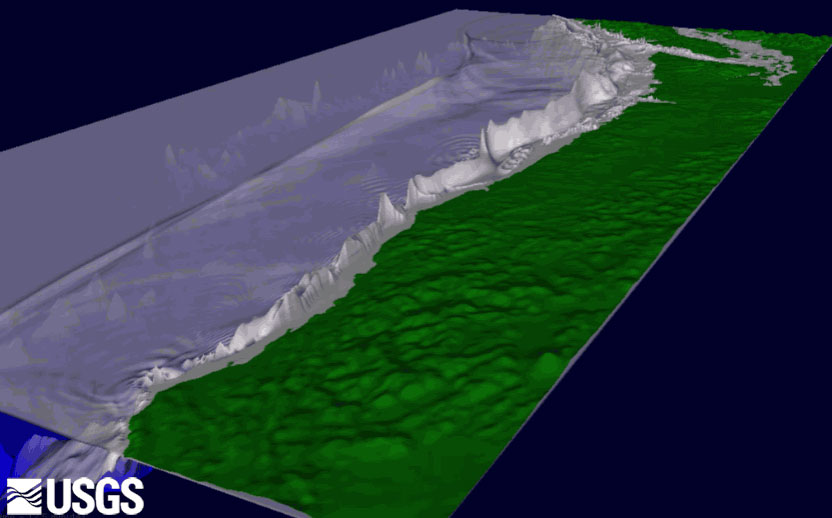
See animation of what a potential tsunami would look like generated from a large and hypothetical magnitude 9 subduction earthquake in the U.S. Pacific Northwest. The height of the tsunami waves is exaggerated compared to the land surface. Credit: Eric Geist, USGS (Public domain.)
Excerpts;
The Cascadia Subduction Zone off the coast of the Pacific Northwest has all the ingredients for making powerful earthquakes—and according to the geological record, the region is due for its next “big one.”
A new study led by The University of Texas at Austin has found that the occurrence of these big, destructive quakes and associated devastating tsunamis may be linked to compact sediments along large portions of the subduction zone. In particular, they found that big, destructive quakes may have a better chance of occurring offshore of Washington and northern Oregon than farther south along the subduction zone—although any large quake would impact the surrounding area…
Read Full Article, Phys.Org (11-20-2017)
Preparing for Tsunami Hazards on Washington’s Pacific Coast; USGS (03-20-2017)
Conventional wisdom about tsunamis says that if you feel an earthquake’s shaking, move to high ground immediately. But what if the area has no natural high ground? Many coastal communities in the Northwest are built on low-lying coastal spits of sand…
Rising Above the Risk: America’s First Tsunami Refuge, Science Daily (10-21-2014)
Washington’s coast is so close to the seismically active Cascadia Subduction Zone that if a megathrust earthquake were to occur, a tsunami would hit the Washington shoreline in just 25 minutes. One coastal community is preparing for such a disaster by starting construction on the nation’s first tsunami evacuation refuge…
More People Could Survive Tsunami If They Walk Faster;
The Orphan Tsunami of 1700 – Japanese Clues to a Parent Earthquake in North America, Pdf File, USGS
One winter’s night in the year 1700, a mysterious tsunami flooded fields and washed away houses in Japan. It arrived without the warning that a nearby earthquake usually provides. Samurai, merchants, and villagers recorded the event, but nearly three centuries would pass before discoveries in North America revealed the tsunami’s source.The Orphan Tsunami of 1700 tells this scientific detective story through clues from both sides of the Pacific. The evidence uncovered tells of a catastrophe, a century before Lewis and Clark, that now helps guide preparations for future earthquakes and tsunamis in the United States and Canada.









